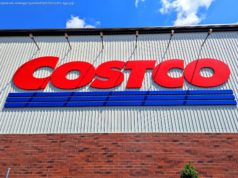Having survived the “startup chasm”, the storage vendor now needs to pump up its focus on Asia-Pacific where enterprises have shown readiness to embrace disruptive technology.
SAN FRANCISCO, USA–On track to hit its first US$1 billion in revenue this year, Pure Storage has earned market credibility and built a strong customer and partner ecosystem; but it still needs to do much more in Asia-Pacific where it currently lacks a strong footprint.
Many startups in the last five to six years had struggled to hit critical mass and scale, leading to questions about their sustainability. Amid this environment, Pure Storage had been able to innovate and respond quickly to market changes, reaching scale in terms of its customer base and partners, said Rajnish Arora, IDC’s Asia-Pacific vice president of enterprise computing research.
Speaking to ZDNet at the vendor’s Accelerate 2017 conference, Arora lauded Pure Storage’s push towards new workloads and capabilities in machine learning, analytics, artificial intelligence (AI) , and Internet of Things (IoT) , which would need massive scale and performance. This would open up new market opportunities as well as demonstrated that the vendor was no longer a one-trick pony trying to tout cost-effective flash platforms.
The analyst, though, noted the likes of Dell, HPE, and IBM would continue to propagate the view that hyperconverged environments provided stronger value than independent storage offerings, offering a centralised resource pool. These vendors championed their ability to deliver seamless experience across storage, compute, and networking.
Both propositions had their challenges and advantages, he said, adding that pure-play vendors could etch their value from a data service perspective and by establishing strategy partnerships with vendors such as Cisco Systems that had compute and networking capabilities, but lacked a strong storage portfolio.
Pure Storage CEO Scott Dietzen believed the vendor’s technology delivered the efficiency and performance that traditional storage offerings failed to offer in today’s cloud era and growing focus on modern applications, such as predictive analytics, deep learning, and AI.
He pointed to the vendor’s use of memory protocol, replacing mechanical disk protocol, so its products bypassed the SCSI layer to deliver higher performance and bandwidth. “At about 15 terabytes, flash used in our competitors’ products would revert to disk so there’s no difference between 15 terabytes SSD and 15 terabytes mechanical disk, ” Dietzen said.
He added that products running on 25-year-old storage technologies were no longer keeping pace with today’s business needs, which required systems that were highly automated to remove complexities and the need for human intervention.
Enterprise customers now also were beginning to realise they could glean more insights from their data to increase their revenue, but could not do so on legacy storage technologies since AI required massively parallel processing. Pointing to Pure Storage’s AI engine Meta, he said the system used predictive analytics to address maintenance and support issues before they occurred, To date, it had helped avert more than 1,000 issues, he added.
He noted that cloud-based services providers, including LinkedIn, Workday, and SeviceNow, accounted for more than 25 percent of Pure Storage’s business. Edge computing also was an emerging business for the storage vendor, with its technology used to support various applications such as autonomous driving, medical diagnosis, and facial recognition.
“We’re confident in our ability to build a best-of-breed storage business…because the technologies we’re replacing were designed more than 25 years old and they don’t help customer pull value from their data. They can’t fit in cloud and can’t support AI, so they’re going to get pushed out.”
Pure Storage, though, would need to do much more in Asia-Pacific. Arora said it was still early days for the storage vendor in the region, where it had good early success in Australia and made some strides in others such as Singapore and Korea as well as a couple of Asean markets. However, it had yet to make a huge impact on and still had a long way to go in the wider Asia-Pacific region.
During his meetings with company executives, the IDC analyst said he had urged the storage vendor against prioritising US and Europe and looking towards Asia only after they had exhausted the first two regions, which was the strategy often adopted by American vendors.
He noted that organisations in Asia-Pacific were willing to take a disruptive approach and redefining their market strategy, leveraging technology to bring about change. New business models continued to emerge in some verticals such as digital banking and cashless payments, he added.
These organisations would be more open to vendors such as Pure Storage than their more conservative peers, which IT infrastructure already were embedded with those provided by traditional vendors such as IBM, HPE or HDS. It would be more challenging then to lure them out, Arora said, adding that Pure Storage would need to ensure it was ready to tap this opportunity before the window closed.
“They need to look at Asia-Pacific more aggressively…yes, they should be selective [about which markets to target] in the region, but my take is they shouldn’t be blindsided by [only focusing] on US and Europe, ” the IDC analyst said.
Dietzen agreed there was significant growth opportunity in the region, particularly since it was home to the world’s second- and third-largest markets. Pure Storage was targeting to grow its international business, which currently accounted for just 20 percent of its revenue, to be bigger than its domestic North America market.
He declined to reveal how much Asia contributed to its revenue, but said it was the company’s fastest-growing region and underscored his interest in entering the Chinese market.
The vendor currently did not have field teams in China and India, but was exploring plans to establish direct presence in both markets, according to Asia-Pacific Japan vice president, Michael Alp. It first entered Asia in 2013 and currently had more than 100 employees across 12 countries in the region, where Singapore and Hong Kong served as its regional headquarters.
Dietzen stressed the need to identify a strong local partner to succeed in China as well as establish local references in markets such as Japan and Korea.
Arora concurred, noting that to succeed in Asia, Pure Storage would need to build up their local teams and hire the right people, specifically account managers and solutions engineers, to cultivate the company’s DNA. It also would must establish the right local partnerships, especially since channels drove large chunks of the region’s IT business.






